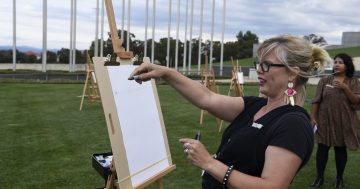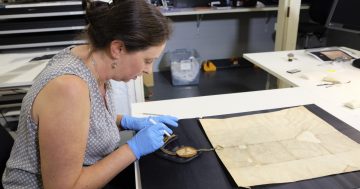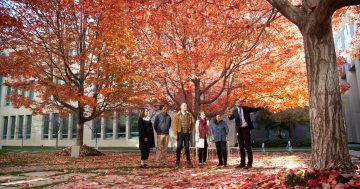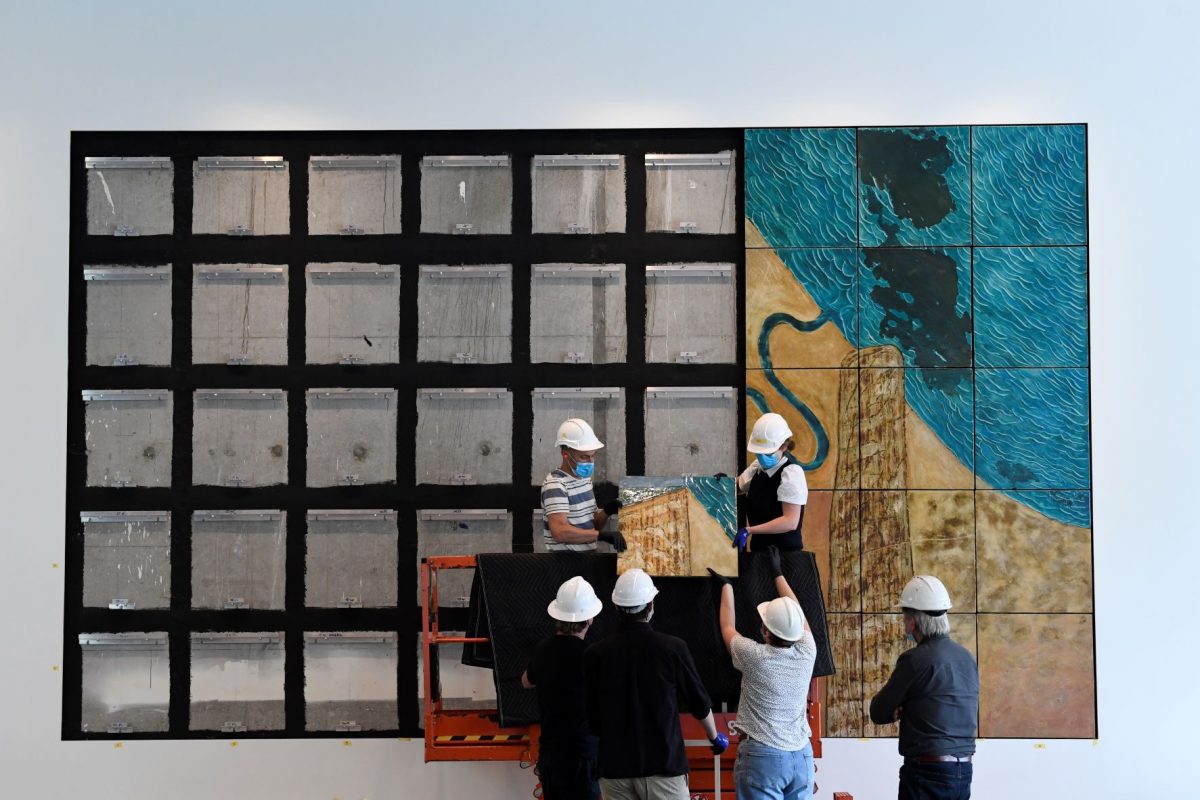
Parliament House art handlers and conservators examine the tiles which make up the River Odyssey frieze during the restoration project. Photo: AUSPIC.
It’s a familiar backdrop when you watch politicians interviewed on the TV news: a vibrant set of six separate multi-panelled works, known as the River Odyssey by artist Michael Ramsden and ceramicist Graham Oldroyd.
Located in the Mural Hall on the second level of Parliament House, the frieze has been as much a part of the nation’s centre of democracy as the building itself, as one of the founding artwork commissions. And like everything with a bit of age to it, there comes a time when they need a once-over, a clean-up and check to make sure the years of hanging around haven’t caused any problems.
But when you’re talking valuable works of art, part of one of the nation’s greatest collections – there are more than 6000 pieces in the Parliament House collection – it takes a little more than just getting the duster out. At Parliament House, we’re talking about expert conservators and art handlers, photographers, heavy machinery – and the best part of a year.
The River Odyssey frieze has just been returned to its wall after a mammoth operation by one of Parliament House’s band of behind-the-scenes experts. Led by Collections Care Manager Jacqueline Jordan, a team of about 10 Parliament House staff started pre-planning the exercise more than a year ago, with every aspect of the conservation work done in-situ.
The work is not only famous artistically, it has another claim to fame. The artists were great fans of former prime minister Gough Whitlam and while they were creating it for the opening of Parliament House, they asked Mr Whitlam to sign it. And he did, on the Desert River frieze.
“He did it in acrylic, but it’s the same colour as the painting – you can see it in the sandy desert as you walk past,” Ms Jordan said.
The six-panel frieze is made up of almost 200 tiles, each about half a metre square and weighing 15 kg each. They cover about 85 square metres in wall space. Made from a specially developed clay, with cement-like properties, the intention was for them to endure a long life on the wall – about six metres off the ground.
Parliament House also invited the expertise of engineer Jon Burchill as a consultant. Mr Burchill was involved in the original installation of the work back in 1987-1988.
“We started scoping out the project around the end of 2021,” Ms Jordan said. “It was quite the undertaking.
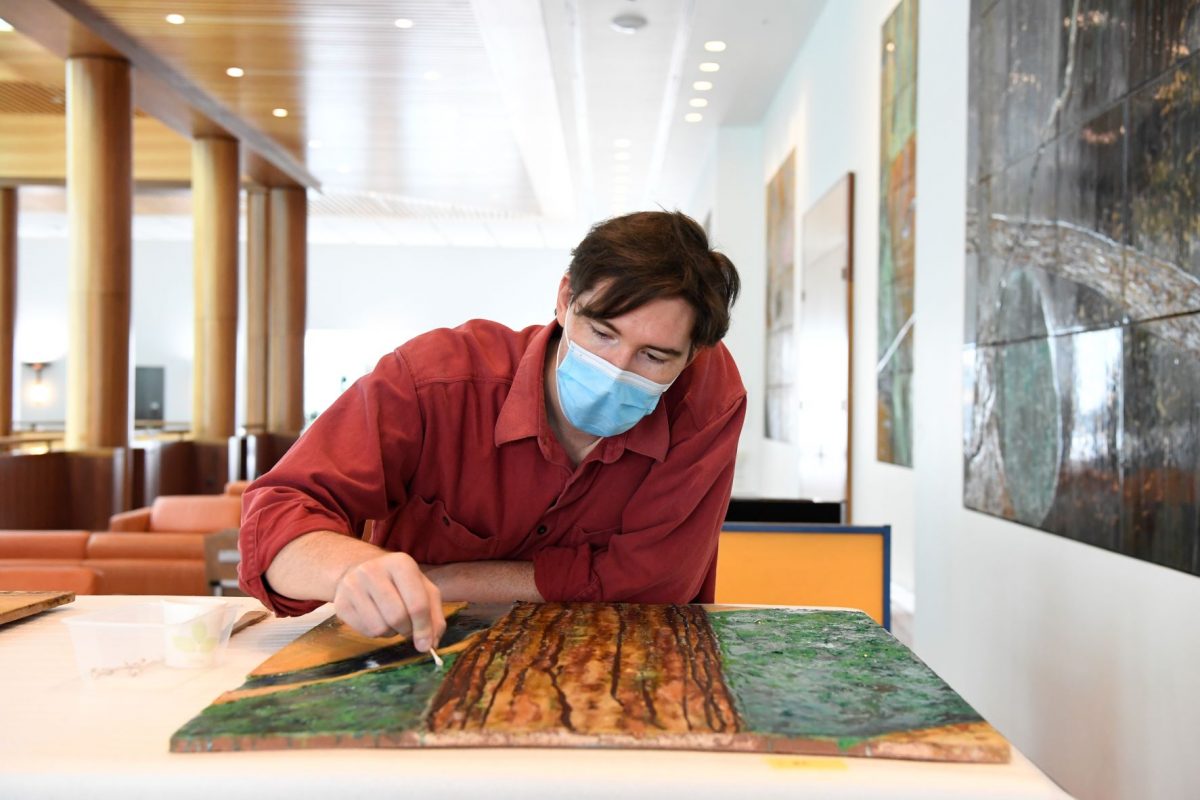
A conservator examines the condition of one of the tiles from the River Odyssey frieze at Parliament House. Photo: AUSPIC.
“It was due for a clean because it is in a function space and we also wanted to check and reinforce if necessary its mounting system. The adhesive used on it alone is 35 years old.”
It was a painstaking yet constructive process for the team, Ms Jordan said.
The art handlers removed, assessed, cleaned and reinstalled the tiles over about a five-week period. There were no mechanics involved in this process, rather the conservators used bamboo skewers, soft brushes and de-ionised water swabs to clean each tile thoroughly. Each part of the process was also photographed as part of the Parliament House art collection digitisation project, which Ms Jordan said was almost three-quarters complete.
After the extensive work, the tiles were found to be still in good condition, with some areas in need of further monitoring and analysis.
“It was a really good outcome,” Ms Jordan said. “We reinforced the mounting structure so it is well secured for the future.
“The work also allowed us to be able to do a close inspection of the tiles, so we could inspect each one and the glaze.
“We also put an archive-grade varnish on to also protect the tiles for the future.”
Ms Jordan said the whole project was a significant undertaking, considering the logistics of everything from safely driving the scissorlift to the physical act of actually getting up the wall to install and remove.
All six parts of the installation are now back on their wall, protected and secured – for at least another 35 years.












